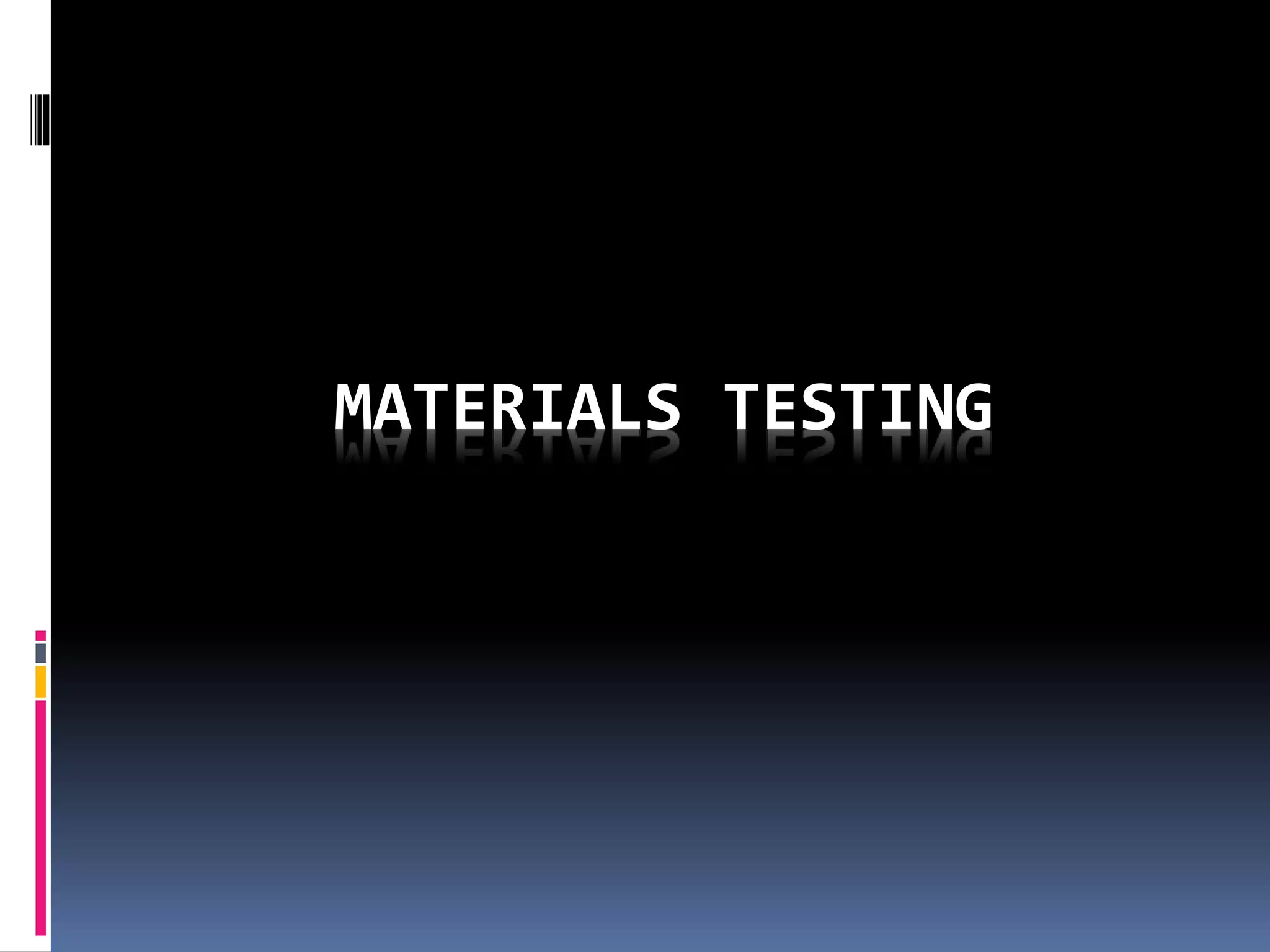Materials are tested for quality control, to prevent failure during use, and to make informed material choices. Common tests include tensile tests, compression tests, bend tests, hardness tests, and torsion tests. A tensile test involves applying tension to a specimen until failure to determine properties like strength, ductility, elasticity, and stiffness. A compression test is the opposite, applying compressive forces. Bend tests evaluate ductility by bending specimens in various configurations. Hardness tests measure the depth of indentation from applied loads. Torsion tests twist a specimen to determine its strength against twisting forces. Understanding material properties through testing helps ensure safe and reliable design and performance of products.
















































